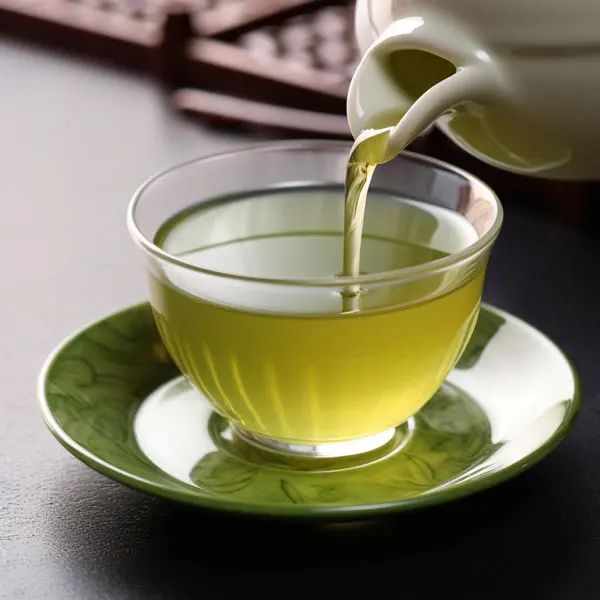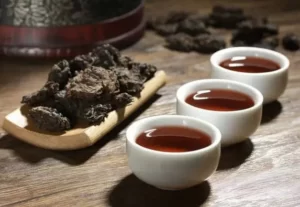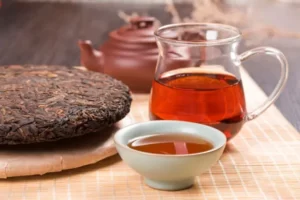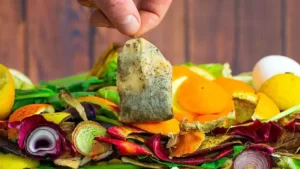Introduction
To become a knowledgeable Yixing teapot enthusiast and make the right choices when purchasing teapots, it’s essential to have a certain understanding of Yixing teapots.
Lack of basic knowledge can lead to falling into one pitfall after another, ending up with teapots that don’t meet expectations or being deceived by unscrupulous sellers. When buying Yixing teapots, there are eight common pitfalls to be aware of. Let’s explore them in detail:
The Choice of Clay Material is Crucial
- Waishan clay material ×
- Benshan clay material √
A good Yixing teapot starts with selecting high-quality clay. Even with exceptional craftsmanship, if the clay is subpar, the overall quality of the teapot will suffer. As a novice in purchasing Yixing teapots, ensure that the clay used is authentic Yixing zisha clay from the original mines in Huanglongshan, Ding Shu Town, Yixing.
In my previous article titled What is a Real Yixing Teapot, I mentioned that only zisha clay sourced from the original mines in Huanglongshan, Yixing, can be called “benshan” clay. Compared to clay from other regions, teapots made from benshan clay are easier to season and improve with use.
There are many merchants who sell teapots claiming to be made with benshan clay but are actually made with inferior clay from other regions(waishan clay). The result is teapots that are non-porous, lacking in the desired oiliness, and causing tea leaves to spoil in less than a night.
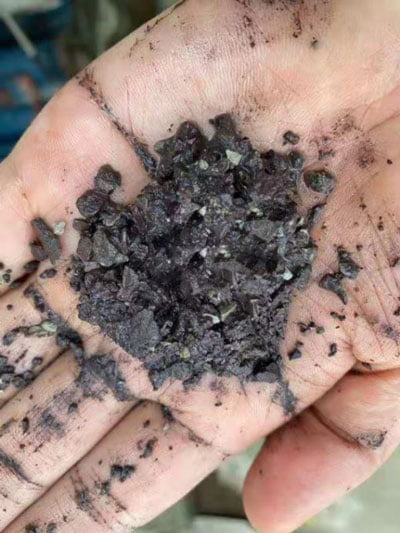

The first image shows Yixing local clay(benshan clay), and as you can see, no matter how small the particles are, they become rounded. When it is made into a paste, there will be gaps between the particles. This allows for breathability without water leakage.
Now let’s look at the second image(waishan clay). The particles appear in a flaky form and are mixed with a lot of silt. As a result, its breathability is minimal. Furthermore, it loses the fundamental breathability of Yixing clay, and its oiliness and patina differ significantly from those of local clay. Only its appearance resembles Yixing clay, but in reality, it is not a Yixing teapot.
Recommendation: When purchasing Yixing teapots, choose ones made with high-quality clay. Huanglongshan’s “Number Four Well” clay is the top choice among benshan clays. If you are just starting out and don’t want to invest in such high-end clay, you can opt for Taixi open-pit mines, which offer a good cost-performance ratio. They have both shallow and deep layer clay, which is suitable for beginners.
Pay Attention to The Design
- Unusual and intricate designs ×
- Classic teapot type √
In my previous article 33 Classic Yixing Teapots, I showcased the works of renowned master potters throughout history. From these examples, it is evident that besides high-quality clay, the design of a teapot is also vital.

There are many Yixing teapots on the market with unusual and intricate designs, but the coordination between the spout and handle is often lacking. Knowledgeable enthusiasts can easily discern the awkwardness of such teapots.
When buying Yixing teapots, it’s advisable to explore classic and replicated styles. These classic styles have undergone continuous refinement by past masters, resulting in teapots with more perfect shapes. For example, the “Duobao” teapot that I previously introduced requires meticulous craftsmanship from masters like Shao Daheng and Cheng Shouzhen to gradually develop its unique style. Such teapots possess a combination of ancient and modern aesthetics, and they are reliable to use.
Furthermore, a teapot’s overall appearance should not only be aesthetically pleasing but also functional. When held in hand, the lid should not wobble, and there should be no water leakage when inverted. The teapot should be free from noticeable flaws.
However, due to the handcrafted or semi-handcrafted nature of Yixing teapots, it is inevitable for each teapot to have some minor imperfections resulting from the craftsmanship. In such cases, a comprehensive assessment is required before making a decision.
There is a saying, “True beauty lies in bone, not in skin,” which means that a truly beautiful person should be attractive in both appearance and temperament, with the latter being more important. This principle also applies to Yixing teapots. The external beauty of a teapot is superficial, and what truly matters is whether the shape of the teapot is appropriate. Is there harmony and coordination between the spout and the body? Do all the components complement and flow smoothly with each other? A high-quality teapot exhibits a sense of vitality and spirit.

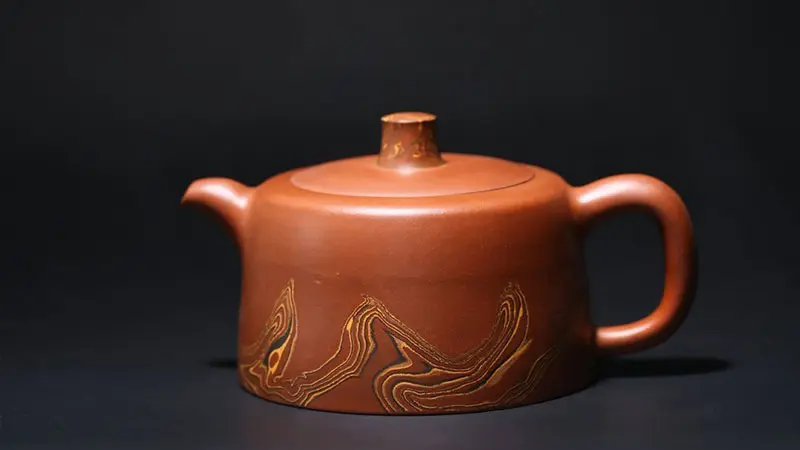
Recommendation: We can enhance our aesthetic taste by observing excellent teapots, such as visiting museums regularly. When you encounter a Yixing teapot, think about who made it, what their works look like, what type of clay was used, and how the components are coordinated. These can serve as valuable references. For example, the “Shipiao” teapot has works by Gu Jingzhou (using Dicaoqing clay), He Xinzhou (purple clay with carving and painting), and Qu Ziyao (carved bamboo) to study and appreciate.
Pitfall of Decoration
- The shape of the pot should be in harmony with the decoration √
There is a popular trend in Yixing teapots of surface decoration, often through carving or painting, which greatly tests a person’s aesthetic sense. It is common to come across teapots in the market that have peculiar and unusual decorations, despite having a normal shape and clay material. Can you imagine the image of a pomelo teapot adorned with tattoo-like patterns? Or a delicate and lovely Xiaoxishi teapot with a painting of Zhong Kui?
Forcing inappropriate decorations onto teapots that don’t match their inherent qualities and temperament is like a child wearing adult clothes, creating a distinct dissonance.
In fact, each type of teapot possesses its unique attributes and temperament. If you forcefully add mismatched decorations, it will significantly diminish its value.
Recommendation: Appreciate classic works to enhance your aesthetic sense. Those who are interested in teapots with decorative carvings are often knowledgeable in seal engraving, calligraphy, and painting, and they are more inclined to pursue handcrafted carvings.


Pitfall of Inscriptions
- The smooth carvings may be computer produced inferior goods. √
The inscriptions on Yixing teapots are crucial evidence for identifying their age and the names of their makers, and they are the only basis for estimating the value of teapots in the field of cultural relics and antique auctions. The form, size, and coordination of inscriptions with the teapot itself are all essential.
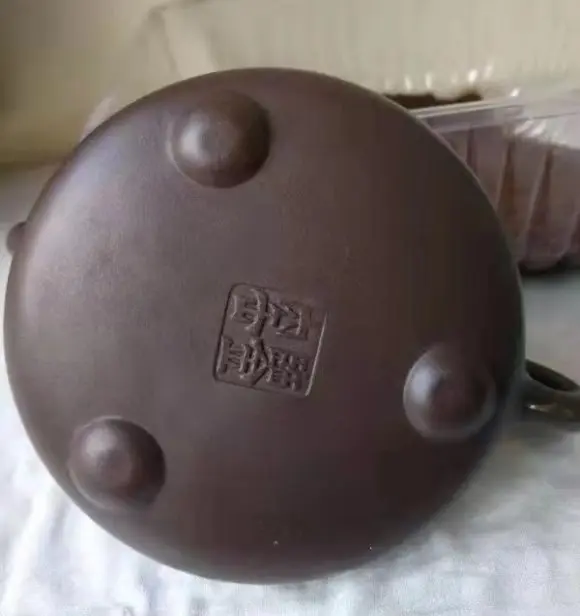
Inscriptions and carvings are somewhat similar in nature. The market is flooded with computer-engraved inscriptions, which are low-cost. However, if a teapot’s maker is not willing to properly carve their own inscription, how good can it really be? A good seal has the feel of carving on metal.
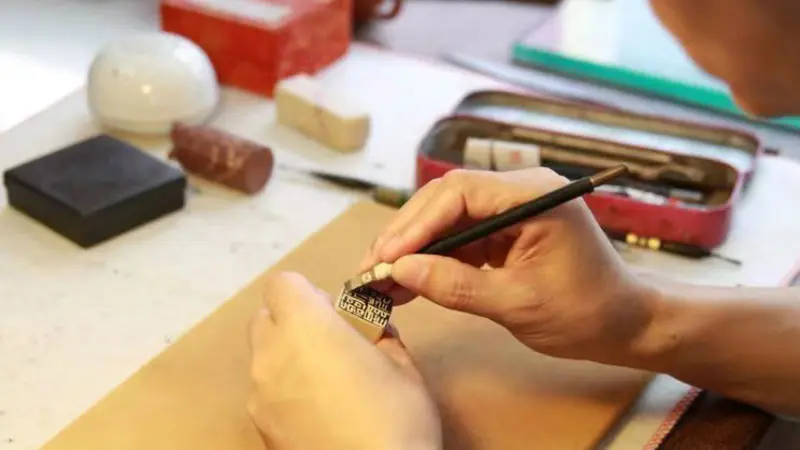
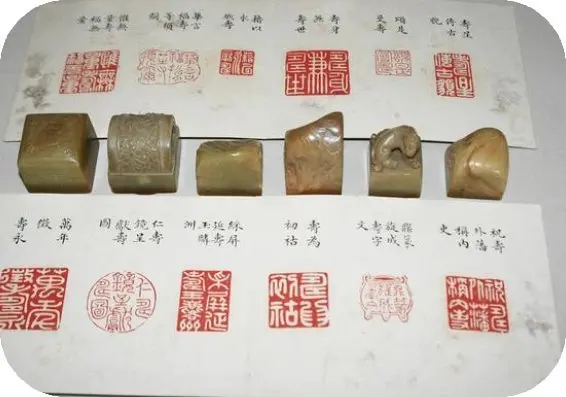
Take a close look at this teapot below: the inscription exudes a sense of carving on metal or stone. Although it may appear rough and uneven, it is because the Yixing teapot’s texture is firm, resulting in some minor chipping, but it also brings a sense of unrestrained freedom.
Consider this teapot as an example. Many people didn’t understand and claimed that the inscription was poorly done, with uneven edges resembling the work of an elementary school student. In reality, the inscription on this teapot is exceptionally well done.
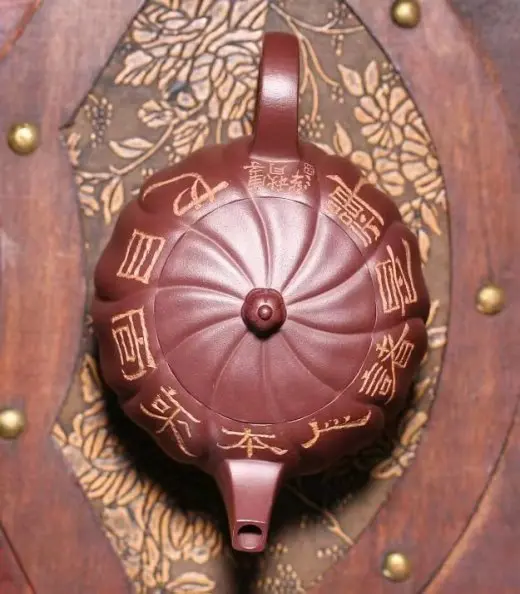
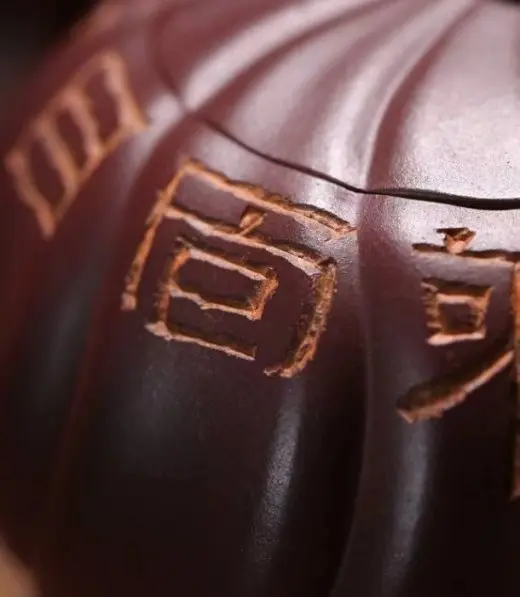
Recommendation: Avoid pursuing overly smooth carvings, as they may be cheap products completed by computers. On the contrary, rough inscriptions with traces of human effort can demonstrate the level of the maker’s dedication to the teapot.
Pitfall of Airtightness
- Assess the airtightness of a teapot by inverting it to see if the lid falls off. ×
Many people want to assess the airtightness of a teapot by inverting it to see if the lid falls off. These practices are often gimmicks created by merchants, and whether the lid falls off or not has no correlation with the quality of the teapot.
Even if you try it with a casting teapot(拉坯壶), it is not easy for the lid to fall off. Similarly, the slight movement of the lid is generally related to the overall structure of the teapot and should not be considered a standard for measuring the airtightness of Yixing teapots.
Apart from the aforementioned methods, some merchants may fill the teapot with water, cover the air hole with their hand, and check if water comes out from the spout when turned upside down, or if the lid remains in place when the spout is pressed.
This is, in fact, a form of misleading. An experiment was conducted on 100 Shi Piao teapots and 100 Xishi teapots with prices ranging from $100 to $2000. When covering the air hole of the Xishi teapots, 97 teapots did not leak water from the spout. When filled with water and turned upside down while covering the spout, all 100 Shi Piao teapots did not lose their lids. Does this mean that all Yixing teapots have excellent airtightness?
When comparing the shapes of Shi Piao and Xishi teapots, their knobs are different, making it impossible to measure these aspects in the same way.

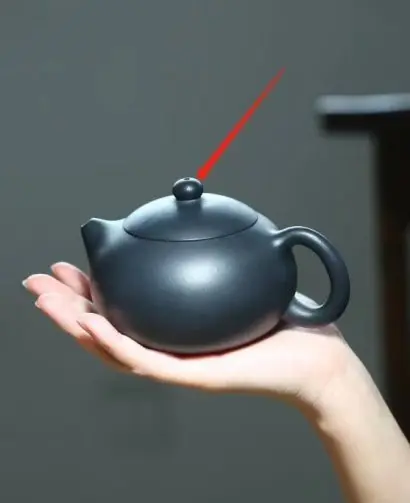
Pitfall of Sound
- Genuine Yixing teapots are said to produce a clear and melodious sound, while fake ones sound dull, like bricks. ×
There is a widely discussed belief circulating on the internet: before purchasing a Yixing teapot, one should tap the pot and listen to its sound. Genuine Yixing teapots are said to produce a clear and melodious sound, while fake ones sound dull, like bricks.
For beginners with limited knowledge of Yixing teapots, they often believe in this claim and imitate others by tapping the pot body with the lid to judge its authenticity and quality.
However, this method of judging the authenticity of Yixing teapots is not reliable. In fact, the sound produced by tapping a Yixing teapot is related to its shape, material, and density. Once these variables differ, the tone and timbre of the sound produced by tapping will also vary. It is difficult for non-experts to distinguish these differences.
The terms “clear and melodious” or “dull” generally refer to the timbre, which is primarily related to the degree of vitrification (crystallinity) of the teapot. The higher the degree of vitrification, the clearer the sound. Therefore, tapping can only provide a rough indication of the teapot’s level of vitrification but cannot be used to determine its authenticity or quality.
For example, Yixing teapots made from Zhu Ni clay, due to their higher degree of crystallinity, require a higher firing temperature, resulting in a relatively clear sound when tapped. However, this is only applicable to the early stage after firing. If the teapot is tapped after brewing tea, the sound may be different. Unless one is a professional, it is challenging for the average person to discern these differences.
Pitfall of Three Points and One Line
- “three mountains level” and “three points and one line” ×
How can one judge whether the shape of a Yixing teapot is normal? There are many different opinions in the market, and the most commonly heard ones are “three mountains level” and “three points and one line.” The “three mountains level” refers to when the lid is removed from the Yixing teapot and the pot is turned upside down on a flat surface, the spout, opening, and handle are all on the same horizontal line.
This claim originated from the practice of using tools to measure whether these three points are aligned during the making of Yixing teapots. However, the method of judging the “three mountains level” by turning the pot upside down is not accurate.
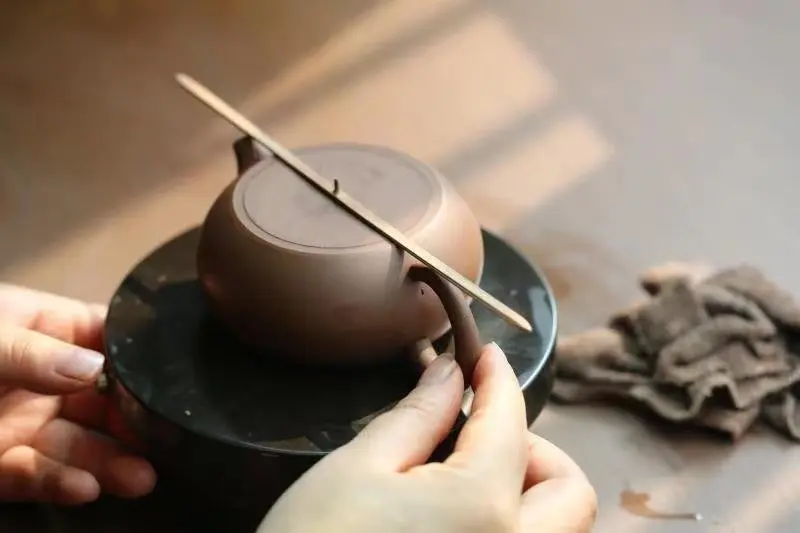
In fact, whether a teapot is “three mountains level” mainly depends on the design of the teapot’s shape. For example, teapot shapes like the “carrying handle” type cannot be turned upside down due to the presence of the handle. Similarly, for persimmon-shaped teapots without a neck, the spout must be positioned higher than the opening during installation to keep the lower lip of the pot flow level with the opening.
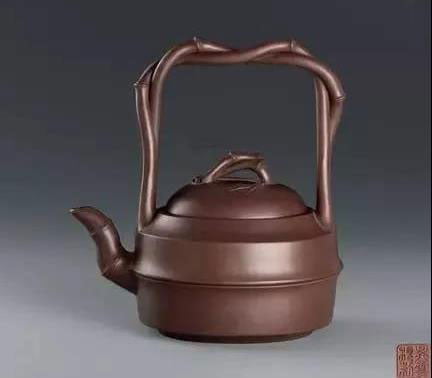

Furthermore, if precise instruments are used for measurement, there is no need for such judgments. It is not realistic to expect handcrafted items to achieve the level of precise measurement. There will be minor deviations during the firing process, just as there is no absolute fairness in the world. Handcrafted Yixing teapots also have human factors involved. Of course, if the deviation is too significant, it may be a craftsmanship issue. However, if one becomes overly fixated on these details, they will not be able to truly enjoy the pleasure of handcrafted Yixing teapots.
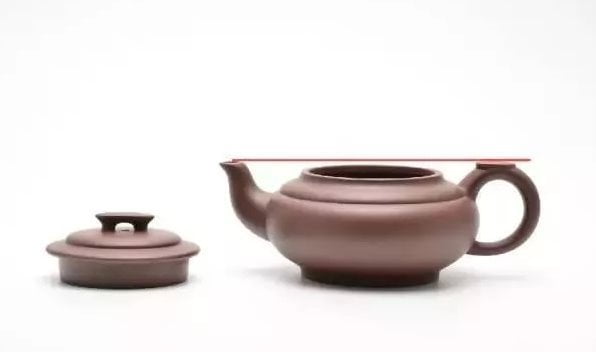
Recommendation: If you want to judge whether a teapot is normal, simply place it upright and use a ruler to observe the pot body from a vertical angle, checking if the spout, lid knob, and handle are aligned on the same line. However, “three mountains level” cannot be used to judge the quality of a Yixing teapot.
Pitfall of Colors
- Matching the clay name with the actual color as a judgment criterion. ×
In the world of Yixing teapots, it is often believed that ink green clay should be ink green, sky cyan clay should be sky cyan, Zhu Ni clay must be red, and Di Cao Qing clay must be green… When buying a Yixing teapot, many people rely on matching the clay name with the actual color as a judgment criterion, assuming that if they don’t match, there must be something wrong with the pot.
However, this judgment method is incorrect. Regardless of the clay type, different firing temperatures can result in different colors. For example, Tao Hua clay can produce more than a dozen colors when fired. It is one of the unique characteristics of Yixing teapots.
Fake ink green and sky cyan clay are prevalent in the market. In reality, ink green clay is actually a pale yellow color, similar to the color of Ben Shan Lv clay.
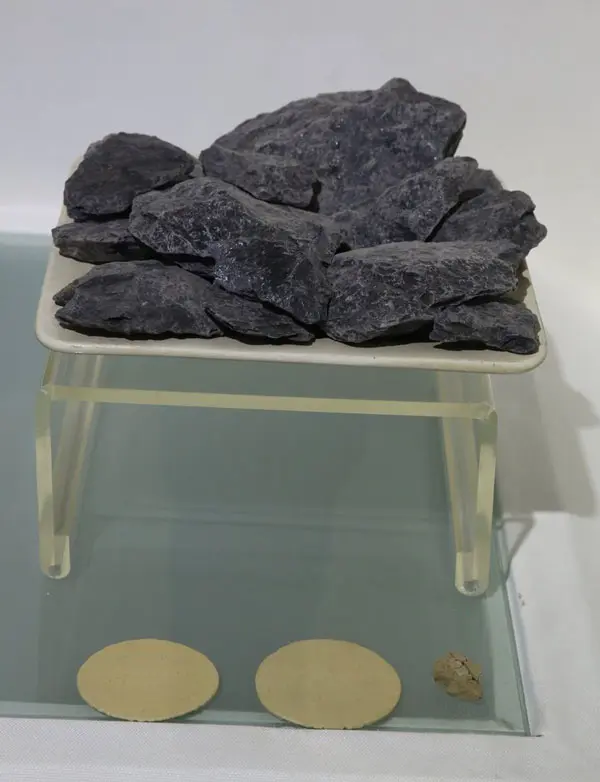
The picture below is the most common fake ink-green clay teapots on the market, usually they are dark green.


Here is an example of museum-grade sky cyan clay. If it is fired at a relatively low temperature, it will have a dark liver color. At high temperatures, it will have a bluish tint.
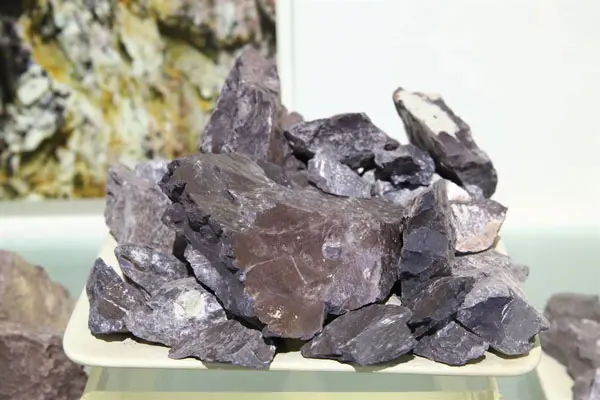

Similarly, for red clay and Zhu Ni clay, their raw ore is yellow in color. Does that differ from your understanding?

Recommendation: If we only have such a one-sided understanding of Yixing clay colors, it will be challenging to find the right teapot. Most Yixing clay names were given by ancient people based on the color of the mineral. This means that Tian Qing clay may not necessarily be sky cyan, and Zhu Ni clay may not necessarily be bright red. Those cheap pots marketed as ink green clay, with exaggerated green colors, are all products colored with chemical pigments.
Conclusion
The eight situations mentioned above are common misconceptions encountered by beginners when buying teapots. You may have experienced them when you first entered the field. In my communication with fellow teapot enthusiasts, I have noticed that they often judge the quality of a teapot based on their own ideas and feelings. While this experimentation is good, I recommend first gaining a comprehensive understanding of the history, culture, clay types, and vessel shapes of Yixing teapots before drawing conclusions.
